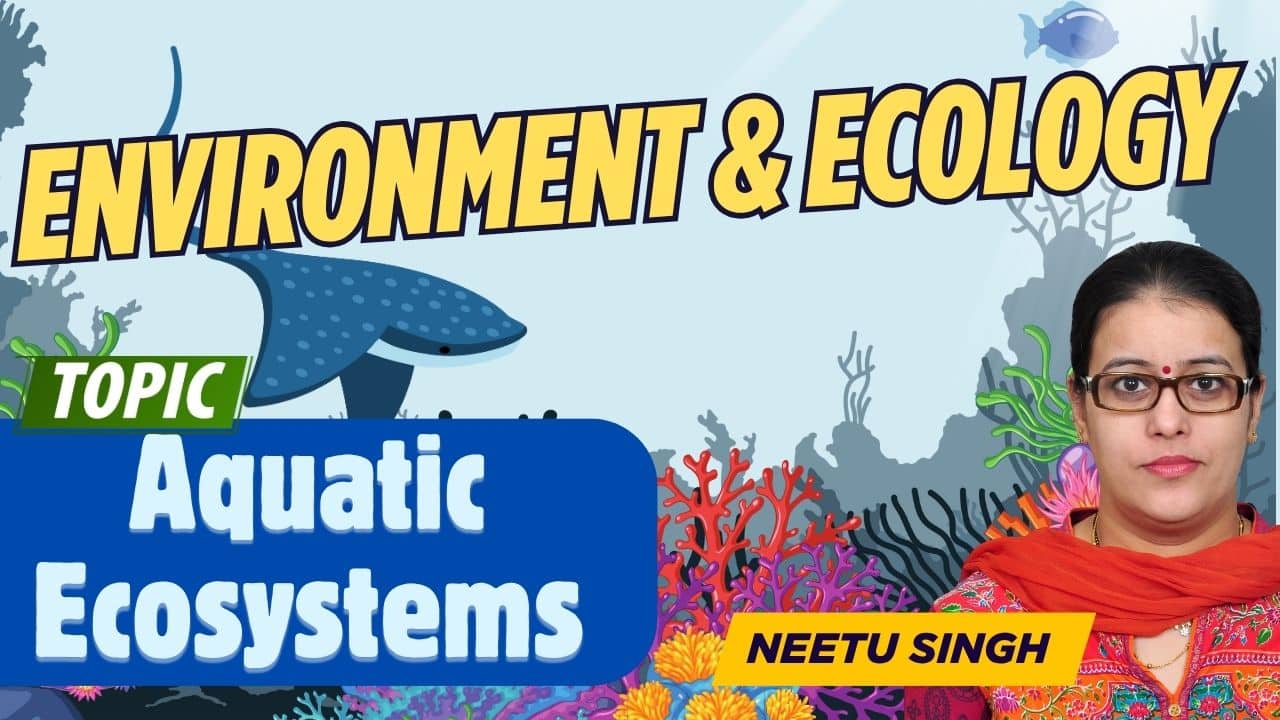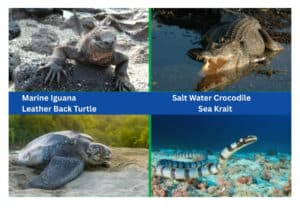
The biosphere is made up of the parts of Earth where life exists. The biosphere extends from the deepest ocean trenches, to lush rain forests and high mountaintops. The Earth can be described in terms of spheres. The solid surface layer of the Earth is the lithosphere. The atmosphere is the layer of air that stretches above the lithosphere. The Earth’s water—on the surface, in the ground, and in the air—makes up the hydrosphere. Since life exists on the ground, in the air, and in the water, the biosphere overlaps all these spheres. Although the biosphere measures about 20 kilometers (12 miles) from top to bottom, almost all life exists between about 500 meters (1,640 feet) below the ocean’s surface to about 6 kilometers (3.75 miles) above sea level.
The Biosphere can be divided in to much smaller Biomes : Aquatic ecosystem
Aquatic ecosystem
An aquatic ecosystem is a specific type of ecosystem found within bodies of water, encompassing both the plants and animals that inhabit these areas. Covering approximately 70 percent of Earth’s surface, aquatic ecosystems are classified into two main categories: saltwater and freshwater. Saltwater ecosystems, such as oceans and coral reefs, have high salinity and feature diverse habitats including intertidal, pelagic, benthic, and abyssal zones, each supporting unique biological communities. Freshwater ecosystems, which include lakes, rivers, and wetlands, are characterized by low salt concentrations and contain varying habitats, such as the warm littoral zone and the deeper, colder profundal zone.
Life Forms of Aquatic Biomes
Neuston :
Neuston are aquatic organisms living at the surface air-water interface. These unattached organisms include bacteria, algae, protozoa, insects, and larger animals like sea snails and jellyfish. They rely on surface tension, utilize the interface as a habitat, and face threats from pollution and climate change.
Types of Neuston
Epineuston: Organisms that live on the water’s surface.
Hyponeuston: Organisms that live just below the surface layer.
Plankton
Plankton consist of any drifting organisms (animals, plants, archaea, or bacteria) that inhabit the pelagic zone of oceans, seas, or bodies of fresh water. They provide a crucial source of food to aquatic life. The name plankton is derived from the Greek word “planktos”, meaning “drifter”. While some forms of plankton are capable of independent movement and can swim up to several hundreds of meters vertically in a single day , their horizontal position is primarily determined by currents in the body of water they inhabit. By definition, organisms classified as plankton are unable to resist ocean currents.
This is in contrast to nekton organisms that can swim against the ambient flow of the water environment and control their position. (e.g. squid, fish, and marine mammals).
Zooplankton are the heterotrophic (sometimes detritivorous) component of the plankton that drift in the water column of oceans, seas, and bodies of fresh water. Many zooplankton are too small to be individually seen with the unaided eye.
Zooplankton is a broad categorisation spanning a range of organism sizes that includes both small protozoans and large metazoans. It includes holoplanktonic (copepods, salps, and some jellyfish)organisms whose complete life cycle lies within the plankton, and meroplanktonic(sea urchins, starfish, crustaceans, marine worms, and most fish) organisms that spend part of their life cycle in the plankton before graduating to either the nekton or a sessile, benthic existence.
Mode of life:
Holoplankton– spends entire lifecycle as plankton Ex. Jellyfish, copepods
Meroplankton– spend part of lifecycle as plankton Ex. fish and crab larvae, eggs
Nutritional modes of zooplankton:
Herbivores: feed primarily on phytoplankton • Carnivores: feed primarily on other zooplankton (animals)
Detrivores: feed primarily on dead organic matter (detritus)
Omnivores: feed on mixed diet of plants and animals and detritus
Zooplanktons are always dominated by two major groups of animals such as protozoa, metazoan
Ecologically important protozoan zooplankton groups include the foraminiferans, radiolarians and dinoflagellates. Important metazoan zooplankton include cnidarians such as jellyfish and the Portuguese Man o’ War
Of the nektonic feeding types, zooplankton feeders are the most abundant and include, in addition to many bony fishes, such as the sardines and mackerel, some of the largest nekton, the baleen whales. The molluscs, sharks, and many of the larger bony fishes consume animals bigger than zooplankton. Herbivorous nekton are not very common, although a few nearshore and shallow-water species subsist by grazing on plants.
